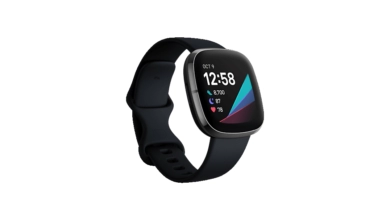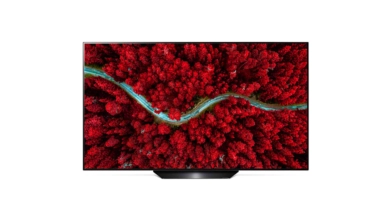Nikon Z7 II
Improved but it's still no Sony A7R IV despite the newer autofocus and 4K 60p video.
Even though the global camera industry is in decline, Nikon may be the hardest hit. Despite a promising Z-mount system and full-frame cameras like the Z6 and Z7, Nikon’s mirrorless lineup has lagged behind rivals on the technology front. The company’s most recent quarter’s reported declining profits reflect this.
A new Nikon Z-series camera with 8K video and other impressive features is expected in 2021, according to reports. During this time, Nikon released the Z6 II and Z7 II, which are the successors to the original models.
The Z7 II, with its 45.7 megapixels, is more of an upgrade than a completely new camera. New features like improved autofocus, dual card slots and 4K 60 fps video have been added, however. Recently, I’ve tested its main competitors, including the Sony A7R IV and Canon R5, and both were excellent. To see how the new Nikon model compares, I’m eager to see how it performs!

Body
There isn’t much to say about the Z7 II’s design since it is nearly identical to the Z7. There are only a few minor cosmetic differences between this and the original model, such as a redesigned logo and an expanded memory card door (to accommodate the new SD memory card slot).
A good thing, in fact. With its generous manual controls and deep, comfortable grip, I found the Z7’s handling to be enjoyable. The camera’s dials, buttons, and joystick are all strategically placed to maximize speed and ease of use. With the Z7 II, you can take it almost anywhere because of its solid construction.
The menus and user interface have also remained largely the same. ‘ There are two ways to get around the menus: either by using the joystick or by using the touch screen. You’ll need to spend some time configuring the camera using the custom settings menu to find what you’re looking for compared to Sony and Canon’s most recent models.
The rear display’s 3.2-inch, 2.1-million-dot resolution matches that of the Canon R5 and outperforms that of the Sony A7R IV in terms of sharpness. However, because it only tilts in one direction and does not swivel, it cannot be used for vlogging or taking selfies. It’s fine for landscape photography, but it’s not ideal.
For a camera with this many megapixels, the Z7 II has a 3.69 million-dot OLED electronic viewfinder, which isn’t quite high enough quality. EVFs with 5.76 million dots are found on all of its main competitors, including the R5, A7R IV, and Panasonic S1R.

The single XQD card slot on the original Z7 was one of my pet peeves. To Nikon’s credit, the Z7 II includes a second slot for a CFExpress or UHS II card, making it compatible with both. You can use it as a backup for professionals, or you can choose between CFExpress storage and cheaper UHS II cards.
A short battery life was another major issue that Nikon addressed in its latest firmware update. Battery life has been boosted to 420 shots, which is nearly double the previous model’s capacity. However, Sony’s A7R IV can take 670 shots on a single charge. For video recording, it extends the battery life significantly—I was able to record nearly two hours of 4K 25 fps video on a single charge without the EVF.
Mini HDMI, USB 3.2, and microphone and headphone jacks are still included, making this an ideal camera for videographers. Studio photographers will appreciate the USB-C port’s ability to provide power to the camera while it is in use.
Performance
Nikon has also improved its performance, in addition to the improvements in the display, storage, and battery life. Because the sensor hasn’t changed, the dual Expeed 6 processors are largely to blame.

In single-shot AF mode, it can shoot at up to 10 fps and in continuous AF mode, it can shoot at 5.5 fps. Despite this, the camera now has a much larger buffer, allowing you to take 77 12-bit RAW photos before it shuts down. During continuous shooting, the EVF is more responsive, so it blacks out less frequently.
Some AF improvements should help to improve the sharpness of these pictures as well. Using your finger to select a subject now keeps the camera focused on that subject for the duration of your shoot. Even when my subjects turned around or stayed out of the photograph’s field of view, the camera’s face and eye-detection mode was still able to identify them. In addition, the “Low Light AF” feature allows you to focus in low light conditions down to -3EV or even darker.
A new feature makes subject and face/eye tracking even easier. If you’re shooting in a group, you can keep the focus on a single area to prevent the camera from wandering off to capture the wrong subject. In the past, Nikon’s eye AF had a tendency to jump from subject to subject when there were multiple subjects in the frame.
The Z7 II’s silent electronic shutter is a big drawback if you want to avoid disturbing your subject. A severe rolling shutter effect means that if you pan quickly, the vertical lines will be skewed.
Only 5 stops of shake reduction are available on the Z7 II, compared to 8 on the EOS R5. Because of this, you may need to shoot at a higher shutter speed or increase the ISO and risk a more noisy image in real life.
Image quality
Fortunately, the Z7 II’s high-ISO performance is second only to Sony’s A7R IV in high-resolution full-frame cameras for low-light photography. Up to ISO 12,800, I was able to take photos with acceptable noise. Sharpness and color reproduction weren’t harmed even at high ISO settings.
At the other end of ISO, it’s also a great option. To make outdoor photography easier, you’ll get a base ISO setting of 64. Even in sunny, high-contrast conditions, I was able to expose for the highlights and boost the shadows without adding much noise because of the low ISO setting.
Images are clear and vibrant with a wide dynamic range, and the Z7 II’s dynamic range is impressive. A wide variety of photos, including portraits, landscapes, night scenes, and animals, looked great using this technique. Landscape and studio portrait photographers need a high-resolution camera like this.

Video
Nikon’s Z6 II is a better choice for video than the Z7 II, as the latter isn’t built for it. Still, the Z7 II is a capable video camera, and it’s a big improvement over its predecessor.
For handheld video, image stabilization works well as long as you don’t move around. Video autofocus on Nikon cameras now tracks moving and still subjects more accurately than ever before, but it still falls short of the latest Canon and Sony models.
It is possible to shoot 8-bit 4K/60p video with a 1.08X crop, rather than 30 fps like the original Z7. For 4K video recording, however, the Z7 II does feature line-skipping, unlike the Z6 II’s line-skipping. Cropping down to an APS-C sensor size is the only way to get sharp, oversampled video, which means losing depth of field and getting a 1.5x zoom.
In addition to the problem of line-skipping, rolling shutter is another problem when shooting video with the full sensor width. Jello or skewed lines will be visible if you try to pan the camera quickly. When using an APS-C crop, this is much less of an issue.
Only a compatible recorder with an HDMI port can receive 10-bit N-Log or HLG HDR footage. And unlike the Z7 at launch, the Z7 II supports external RAW video recording at up to 4K (with a crop) or in HD using the full sensor of the Z7 II’s camera.
I recorded video in N-log on both internal and external recorders. Even when using the entire sensor, the image was sharp and the colors were accurate. With its wide dynamic range, I was able to make significant post-production adjustments to the video, especially when shooting in log or HLG modes. However, compared to the Canon R5, the lack of internal 10-bit, log, and RAW recording is a disadvantage for professional videographers.

Wrap-up
When the first full-frame mirrorless cameras from Nikon and Canon were announced, I gave Nikon the advantage. In 2021, after both Canon and Nikon have released new high-resolution and standard-resolution cameras, what will be the outcome??
Canon comes out on top this time. For all its flaws, the R5 outperforms even the slightly better-equipped Z7 II. In terms of video, it’s far superior thanks to its improved autofocus and stabilization, as well as its higher frame rates.
The EOS R5 is a huge improvement over the EOS R because of Canon’s advanced technology. There isn’t much to get excited about with the Z7 II because Nikon only made incremental improvements.
At $3,000 and less than $200 less than the R5, the Z7 II is a good value. The A7R IV from Sony is $500 more expensive. I’d recommend the Z7 II if image quality is important and you have a limited budget. To save money, I’d recommend the Sony A7R IV for landscape and studio work, or the Canon R5 if video is more important to you — unless you want to wait for Nikon’s next-generation cameras.
Nikon Z7 II Review
Performance - 8.1
Display - 9.3
Cost - 8.4
8.6
8.6/10 Total Points
New to the Nikon Z7 II are 4K 60 fps video, improved autofocus, and dual card slots, all of which are welcome additions to the original Z7. It's also one of the best high-resolution, full-frame mirrorless cameras on the market. However, in terms of resolution, image quality, and shooting speed, it falls short of Sony's A7R IV. The Canon EOS R5 outperforms it in terms of autofocus and video quality. Z7 II is a good buy for budget-conscious photographers because it's a high-resolution full-frame mirrorless camera at the lower end of the price range.





